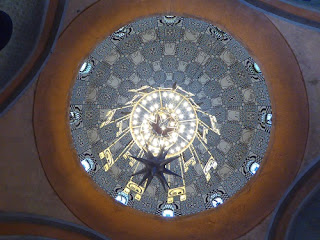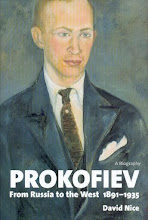Showing posts with label Budapest Zoo. Show all posts
Showing posts with label Budapest Zoo. Show all posts
Thursday, 10 August 2017
Birds, beasts and zoo buildings of Budapest
There's a happy little zoo, if such a thing isn't a contradiction in terms, in the middle of Budapest's Margaret (Margit) Island where the nesting storks are presumably free to come and go as they wish.
Finding it on a hot day's slow stroll around the lime-blossom-scented island was serendipity. But I consciously sought out the main Budapest Zoo not so much for the animals as the architecture.
This may look like a mosque but in fact it's the Elephant House, originally designed by architect and university professor Kornél Neuschloss, who was in charge of the technical works which led to the opening of the zoo roughly as we know it now in 1912. Its chequered history had begun in 1866, and in the interim attempts to liven up the public's reluctance to just come and gape at the animals included the introduction of circus acts. In vain. Only when the Municipality of Budapest took over the site in 1907 did things change for the better. In addition to Neuschloss's work, which also featured the wonderful Main Gate
topped by polar bears
and with a mandrill in the wider design,
his talented former pupils Károly Kós and Dezső Zrumeczky added other houses in various 'exotic' styles (they were influenced, of course, by Art Nouveau and the Vienna Secessionists). Most were destroyed in the Siege of Budapest, when the animal species shrank from 2,000 to 15 and the populace were reduced to eating most of them, but the buildings were handsomely reconstructed or rebuilt after 1945. Among these, I take it, are a mosque in Maghreb style surrounded by zebras and flamingos,
as well as a far eastern Reptile House
and what is now the Lemur House, in its rather splendid decadence within but still spacious.
And my first ever acquaintance with ring-tailed lemurs was actually rather marvellous.
They have the run of quite a few trees in their compound, scurrying and shrieking above a couple of well-placed seats.
The Elephant ('Pachyderm') House, though, is the design highlight, from the archways at front
and back
with a minaret to the side
and the dome splendidly decorated within
along with the corridors,
though the 'rooms' leading off the lanterned hallway are more what you might expect.
One elephant was nearly out of sight beyond the back entrance, though from there one got the best view of the hippos basking in the water to escape the heat, in the company of two unperturbed ducks.
More elephants were to be found in the huge Savannah Complex, designed in 2008 by Anthony Gall,
trunking up for their bales of grass
while a white rhino didn't look quite so happy nearby.
I was also pleased to see my first aardvark, pigging around in the dark. This isn't the greatest of photos, owing to the semi-dark, but it does offer the ocular proof of this strange creature.
As zoos go, though it isn't big, Budapest's example - now, I'm told, run by a rather visionary CEO - is green and lovely. Its south end, which used to be a funfair, is now more a botanic garden with the old iron-structured Palm House of 1912 by Gyula Végh as its centrepiece.
And the central lake, with ubiquitous pelicans, gives a further feeling of space.
My visit was a rather restricted one on the last morning of my week-long Wagnerfest visit, and I ran out of time to hunt out the rarest creatures - Komodo dragons and wombats - but I did catch passing glimpses of an African crested crane
and a not-laughing, in fact rather melancholic-looking kookaburra.
The storks were happier far in their little sanctuary on the island, and with them I take my leave of Budapest for this year.
Thursday, 9 January 2014
St Petersburg 1914
So now I can stick on my CV that I've written a monologue for a famous actor. I've had scripts for two Glyndebourne 'Opera Bites' - a sadly defunct CD series of introductions - read by Fiona Shaw (Bizet's The Pearl Fishers) and Timothy West (Prokofiev's Betrothal in a Monastery), but this one 'for' Jonathan Pryce is slightly different. It seemed like a crazy thing to have to do when Radio 3 approached me to provide a 'musical postcard' from St Petersburg for its series Music on the Brink, about Europe in early 1914. 'Present it like an "I was at a great concert last night" type of thing', I was told, and groaned far too audibly.
Then it came to me. First, why not just snippet from Prokofiev's extensive diary for that year? Not quite the format they wanted. So how about this: write the postcard as from one of SSP's fellow St Petersburg Conservatory student friends, waiting for his climactic participation in the student competition to claim a Schroeder grand piano as prize (he won it playing - in an unprecedented move - his own First Piano Concerto as well as Liszt's transcription of Wagner's Tannhäuser Overture)? That did it: thus I could cover not only SSP's new steps in music but also the ongoing Wagner craze and his first live hearing of Stravinsky's Rite of Spring in a Koussevitzky concert. Picture of SSP below is a bit later, from the American period.
You can hear the results this afternoon at some point during In Tune starting at 4.30pm, and thereafter for the next week on the BBC iPlayer, perhaps maybe for all time on this clip added tonight which I've just (23.00) heard (as a matter of personal pique, although I'm assuming Suzy Klein gave a credit in the back announcement, there's none as it stands in the presentation or the broadcast here, which is a bit poor; but what's a script hack compared to a 'star of stage and screen'? UPDATE: my gripe has been answered, the credit added. So I'd wipe the rest of the parenthesis were it not for the sake of the comments making sense).
My mention of a chess game Prokofiev held during the competition with a female rival got cut, but in any case I stopped short of chronicling a simultaneous, momentous event in his life, his participation in the 1914 St Petersburg International Chess Championships held that April.
I have a fair bit about it in the biography, and there's more in the ever compelling diaries, but until today I didn't know this extraordinary photo existed. That I now do is courtesy of Edward Winter's Chess History website
Spot the composer? I thought I saw him at the back. This partial key from some diligent chess fan made me look again. You'll need to click on the pic to enlarge for the numbers.
1-Alekhine, 2- Janowski, 3-Capablanca, 4-Bernstein, 5-Marshall, 6-Blackburne, 7-Lasker, 8-Tarrasch, 9-Rubinstein, 10-Nimzowitsch, 11-Gunsberg, 12-D.D. Korelev, 13-A.I. Alekhine, 14-J. Taubenhaus, 17-N.A. Znosko-Borovsky, 21-E.I. Talvik, 22-Boris Bashkirov-Verin 23-P.A. Saburov, 24-S.S. Prokofiev, 25-J.O. Sossnitzky, 26-A.A. Chepurnev, 27-R. Gebhardt, 29-B.E. Maliutin, 31-P.P. Saburev, 33-A. Burn, 35-Vainshtein, 36-P.A. Eftifeev, 37-Lochwitsky, 39-Ed. M. Nabel, 40-P.P. Potemkin, 56-B.Z. Kolenko, 58-Frau Lasker
So that includes not only SSP (24) but also the great contestants whose game was taking place around the time of the picture, Prokofiev's soon-to-be firm friend José Capablanca (3) and Emmanuel Lasker (7), whom the composer compared respectively to Mozart and Bach (see pages 99-100 of my Vol. 1), as well as his feckless chum Boris Bashkirov who wrote poetry under the name of Boris Verin (22). Also in the biog's appendix is the simultaneous chess game victory Prokofiev gained over Capablanca on 16 May.
As for the wider events leading up to the terrible, unanticipated* explosion of August 1914, I've been reading more about them with horror and a heavy heart in between the wit and wisdom of Simon Winder's sequel to his captivating Germania, Danubia.
Oh, the pointlessness not just of the Great War but all those lives lost in the carnage of the Habsburgs' earlier conflicts. What especially makes the heart sink is the shifting Realpolitik which dogs every conflict even today, the principle of 'my enemy's enemy is my friend' which afflicted the patchwork of nations and languages making up the ever-shifting Austrian (and Austro-Hungarian) Empire.
Even so, despite all those mid-19th century feckless battles, Winder constantly reiterates, as he did in Germania, how 1900s Vienna didn't especially see itself as the dancer on the abyss it becomes with hindsight. He's fascinated by the social life which leaves none of the traces we use as signifiers - film, music, art, literature.
Winder's most extravagant flights of fancy come in accounts of visits to often melancholy sites around the former empire. Marienbad/Mariánské Lázně gets the 'attractively brittle...pointless fraud' treatment, harmless on the surface and horrible underneath, Winder concluding that section brilliantly: 'This framework for polite, empty circulation, a regulated, closed environment for the right kind of people, now seems to stand for a lost and enviable pre-1914 world, but in practice it has always been toxic and peculiar'.
His paean to the architecture of Budapest Zoo culminates in a delirious ('demented' would be Winder's word, sometimes a bit overused in his second volume) description of the Guinea-Pig Village. Below, the 'faux-Tamerlane' Elephant House, 'possibly the maddest of all Hungarian "Turanian" fantasies about national origins in some vague but grand part of Central Asia, with the unique displacement activity of also granting the nation's elephants a shared Hungarian ancestry'. Winder goes on to tell us how during the brief, unlikely re-alignment with the Ottomans in the First World War the suggestion of a mosque for pachyderms caused offence, so the minaret had to be removed for a bit.
Buy, read, marvel at the lightness with which Winder wears his polymathy. His curiosity is boundless and he's left me with an enormous list of places to see - aforementioned zoo, the perfect Bohemian town of Český Krumlov on the Vltava and Sibiu in Romania right at the top; of literature to read - time to pick up my three-volume Banffy, but also to seek out other Czech and Hungarian novels; of films to see and music to hear (Winder is one up on me in knowing, and making attractive the prospect of listening to, the four Zemlinsky string quartets - shame I couldn't get to any of the concerts in the Hampstead Festival cycle). But to make the full 'follow up' inventory I need to go back to the book and comb through. It's certainly one for the ages.
*A tart commenter takes me to task for the irresponsible use of that word - I reply (see below) that I should have qualified it with the acnowledgment that it was the extent of the explosion, its ramifications, which could not have been anticipated.
Subscribe to:
Posts (Atom)








































